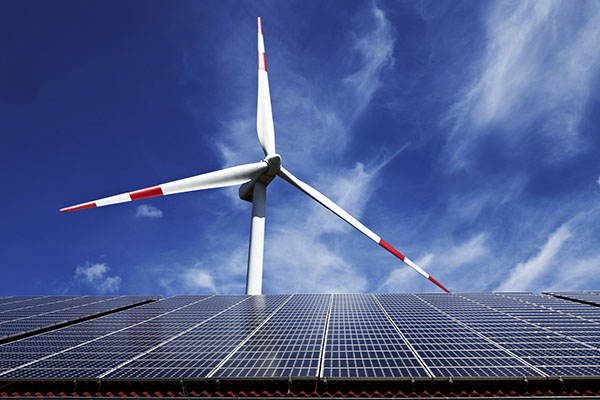


The curtailment rates of both wind and solar power continue to drop this year, a result of enhanced efforts to increase the efficient use of renewable power, according to the largest utility company in China.
In recent years, China has been investing more than any other country in wind and solar power, but the mismatch between power generation and utilization has proven problematic for China. The northwest and northeast of China, home to the most wind turbines and solar farms, are the areas most prone to curtailment.
China’s wind installations reached 23,328 MW in 2016, lower than last year. This is partly because the nation’s power grid was unable to handle the volume of new wind capacity, the Global Wind Energy Council pointed out in its annual market report, released in February.
That problem has eased some this year, according to several international clean energy organizations. State Grid cites curtailment rates of wind and solar power being cut by 7.2 percent and 5.3 percent to 16.5 percent and 9.2 percent respectively in the first four months of 2017. From beginning of this year, the company has taken action to guarantee renewable power feed-in, said Zhang Zhengling, deputy director of State Grid's Development Department.
Wind- and solar-generated electricity is given a higher priority than the more dominant coal power in terms of both generation and transmission. A tentative cross-province market has also been established for the trade of unused power, Zhang elaborated.
More work is still necessary to reduce the waste of green power, including investing less in coal-fired power and more in ultra-high-voltage transmission lines and grid integration updates. If these measures are implemented, the level of curtailment will likely be 5 percent by 2020, according to State Grid.
 Fire brigade in Shanghai holds group wedding
Fire brigade in Shanghai holds group wedding Tourists enjoy ice sculptures in Datan Town, north China
Tourists enjoy ice sculptures in Datan Town, north China Sunset scenery of Dayan Pagoda in Xi'an
Sunset scenery of Dayan Pagoda in Xi'an Tourists have fun at scenic spot in Nanlong Town, NW China
Tourists have fun at scenic spot in Nanlong Town, NW China Harbin attracts tourists by making best use of ice in winter
Harbin attracts tourists by making best use of ice in winter In pics: FIS Alpine Ski Women's World Cup Slalom
In pics: FIS Alpine Ski Women's World Cup Slalom Black-necked cranes rest at reservoir in Lhunzhub County, Lhasa
Black-necked cranes rest at reservoir in Lhunzhub County, Lhasa China's FAST telescope will be available to foreign scientists in April
China's FAST telescope will be available to foreign scientists in April "She power" plays indispensable role in poverty alleviation
"She power" plays indispensable role in poverty alleviation Top 10 world news events of People's Daily in 2020
Top 10 world news events of People's Daily in 2020 Top 10 China news events of People's Daily in 2020
Top 10 China news events of People's Daily in 2020 Top 10 media buzzwords of 2020
Top 10 media buzzwords of 2020 Year-ender:10 major tourism stories of 2020
Year-ender:10 major tourism stories of 2020 No interference in Venezuelan issues
No interference in Venezuelan issues
 Biz prepares for trade spat
Biz prepares for trade spat
 Broadcasting Continent
Broadcasting Continent Australia wins Chinese CEOs as US loses
Australia wins Chinese CEOs as US loses